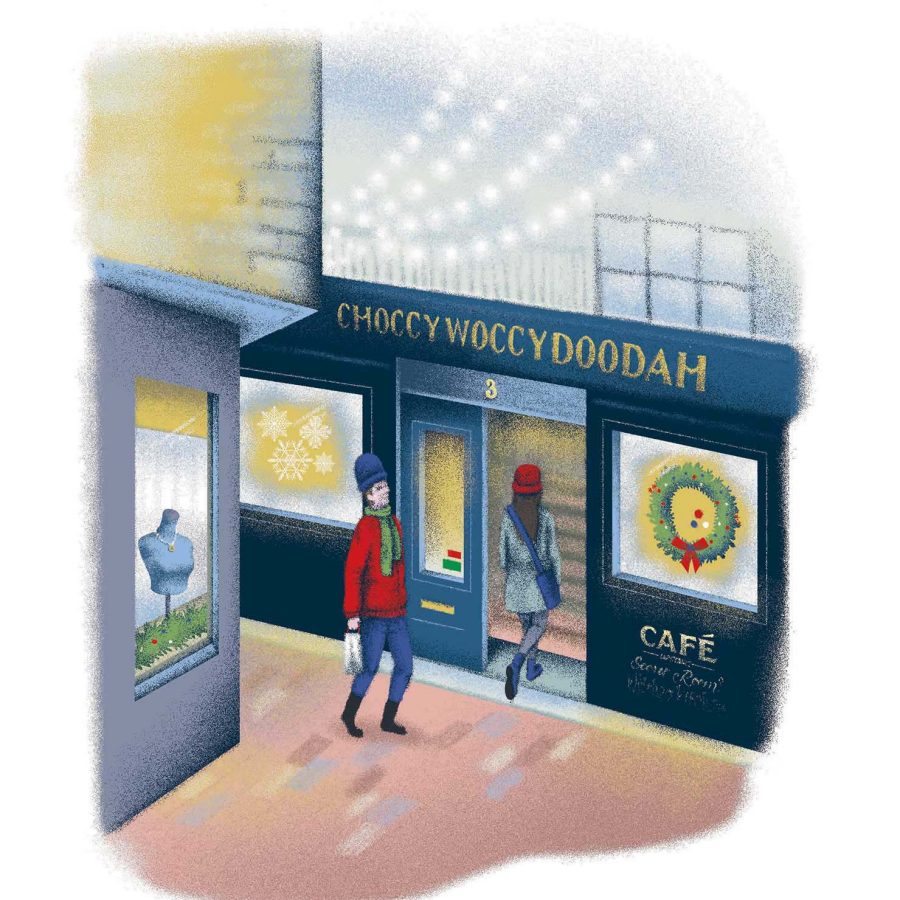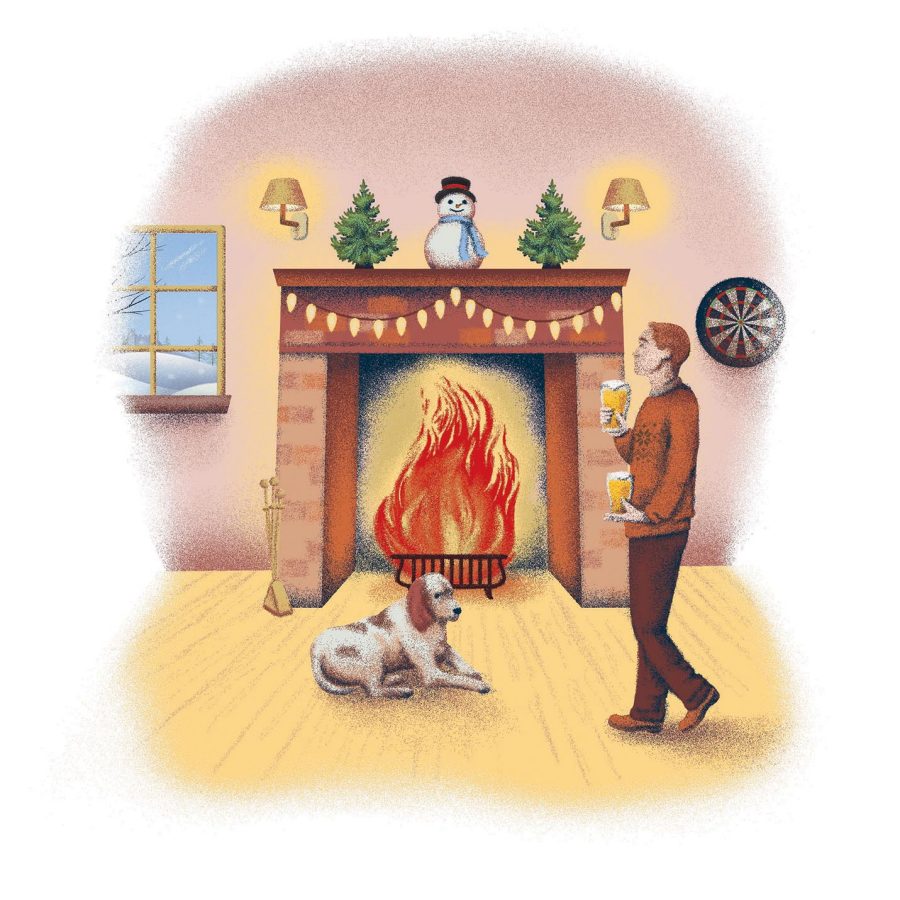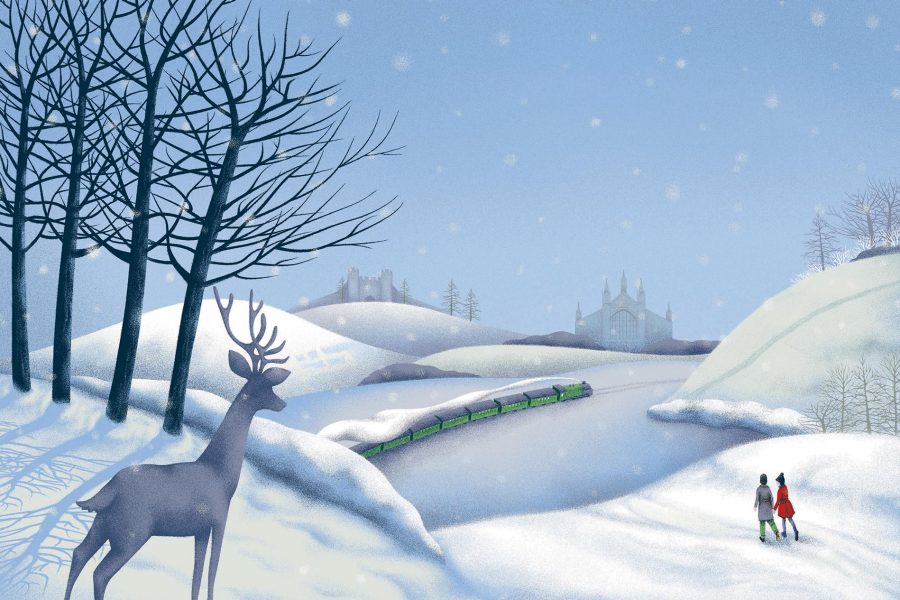I would be fibbing if I said I was one of the very few English grownups who can listen to The Holly and The Ivy without blinking back a tear.
The rising of the sun
And the running of the deer,
The playing of the merry organ,
Sweet singing in the choir.
Christmas in 2018 is a pretty urbanised and commercialised affair. In Britain, it starts in the supermarkets some time in October, then spreads down the high streets and into every home through TV and pop-up ads online. By the time you get to 25 December, we are stupefied by a Christmas that’s neon and backlit, tinselly and fabulous.

Credit: Angela Ho
All of which is wonderful and very good for the economy. But The Holly and the Ivy has a deeper, simpler, more powerful magic. It speaks of the old ways, the ancient villages, a rural English Christmas before the John Lewis Christmas ad, before Santa, even before Charles Dickens and Ebenezer Scrooge. I’ve lived in Hong Kong for most of my adult life. That’s the English Christmas I miss. So, that’s the one I decided to go looking for.
The quest began on the motorway that runs south from London to Brighton, aka London-by-the-Sea.
You need to get off the motorway and go backwards in time. A satnav – or a map and some common sense – can act as a guide along high-hedged country roads that thread their way across the Weald. As you weave between the chalky South Downs and hidden valleys you are already in the droveways of a much older England.
A short detour brings you to Ashdown Forest . This is where you want to be on a frosty morning around Christmastime for the full Holly and the Ivy experience. It was a favoured hunting ground for English kings and queens from Norman times onwards: if there is one place you are guaranteed to see the running of the deer, it’s Ashdown. (But many visitors, especially from Asia, come in search of a different kind of animal: a small bear called Winnie the Pooh, whose creator, AA Milne, lived here in the 1920s.)
From here, we head to Brighton. It’s Christmas: we shop.
Even in this most progressive and hip of English cities, you can find traces of the ‘irregular market town’ this once was before the piers, Pavilion and Premiership football.
The Lanes are a warren of narrow streets much loved by antique dealers; where you can plausibly pretend you’re looking for a present for your wife in, say, 1793.
At Baroque Bespoke Jewellery I pick up a pair of ‘Brighton Rocks’ gold and diamond ear studs, designed and made on the premises.
The Englishman’s home is his castle. And at Christmas, that home is likely to be a modern suburban house with a four-metre-long decoration of Santa and his sleigh taking up most of the frontage.
We wanted a proper castle. West of Brighton, happily, there is one.
Amberley is the real thing – portcullis, 18-metre-tall walls, muster of peacocks – and has been around since the 1300s. Now it houses a hotel with 19 bedrooms, whose mullioned windows and antique furnishings murmur ‘quintessentially English’.

Credit: Angela Ho
There is intense competition among castles and stately homes at Christmas. Amberley keeps the thing simple and traditional with a non-stop combination of ritual and gluttony. You get cream tea (a light afternoon tea of scones, clotted cream and jam) when you arrive, then an a la carte dinner followed by singing lustily at the nearby parish church for midnight Mass. Christmas Day: the full English breakfast, and a six-course lunch and buffet in the evening. It’s a careful balance between the pounds you put on and the pounds you lose (£695 – HK$7,100 – a night for 24-27 December).
As the calorie count mounts, the average Briton is gripped by the need to don an amusing Christmas jumper and Wellington boots and head into the great outdoors.
The South Downs is a wonderful place for a Boxing Day ramble. Boxing Day – said to be named for the church poor box traditionally unlocked immediately after Christmas – demands exercise. I’ve a great fondness for the South Downs Way , a prehistoric path running over the hilltops from Winchester in the general direction of Gatwick and down towards Eastbourne. Its 160 kilometres are way too far for an afternoon potter, but a short section is utterly bracing.
And the British constitution states that a good ramble must end in a good pub.
A little west of the South Downs National Park , at the end of a lane mapped in the 11th century Domesday Book, The Harrow is a perfect pub at any time of year. At Christmastime, it becomes as close to an English heaven on Earth as you’ll find. A log fire crackles, the menu promises ‘scotch eggs (on some days)’, and regulars – mostly grizzled, some less so – have been known to organise a poetry competition.
Despite being bombarded with enthusiastic praise by award presenters, guidebooks and websites, The Harrow ��– dating from the 16th century – changes little, welcoming to outsiders but essentially a social pivot for anyone who lives within walking distance.
‘There’s a lot of banter, like thinking up a faux Wi-Fi password – though naturally the pub’s not wired,’ says Jhon Cosgrove, who lives in a nearby timbered cottage.
‘Many of the beers, like Bowman’s Swift One and Ringwood Best Bitter, are brewed here in Hampshire. The Harrow’s certainly not a gastropub, simply somewhere that serves very good, simple food. The Ploughman’s – bread, cheese and pickle – is gigantic and genuine.’
Like Christmas itself, Christmas dinner has extended way beyond the confines of 25 December. Pubs and inns like The Wykeham Arms in Winchester, the former capital of England, and The Montagu Arms in Brockenhurst, on the edge of the 1,000-year-old New Forest, roll out £30-a-head seasonal menus (HK$300) for pretty much the whole of December. Roast turkey with chestnut and sage stuffing is de rigueur, Christmas pudding – crowned with a sprig of holly and flamed with brandy – remains the only acceptable follow-through, though I can rarely resist a mince pie and brandy butter. The Wykeham Arms is also handily close to the cathedral, which traces its origins to 642 AD and come December hosts a German-style market, an outdoor skating rink and a sublime carol service lead by 22 boy choristers.
To finish: a Harry Potteresque journey watching the countryside going past, in a painstakingly restored steam engine thundering along the Watercress Line between Alresford and Alton. It’s a fitting way to end my Yuletide journey. Not once have I been tempted to use the words ‘contemporary’ or ‘vibrant’. You can spend the rest of the year looking for that. Christmas is for the cosy set.
Hero image: Angela Ho
More inspiration
London travel information
- China – the Chinese Mainland, Hong Kong SAR, Macao SAR and Taiwan Region
- Hong Kong SAR - English
- Chinese Mainland (China) - English
- Taiwan, China - English
- 香港特別行政區 - 繁體中文
- 中国內地 - 简体中文
- 中國台灣 - 繁體中文
- Africa
- South Africa - English
- Asia
- Bangladesh - English
- Korea - English
- Singapore - English
- Cambodia - English
- 한국 - 한국어
- Sri Lanka - English
- India - English
- Malaysia - English
- Thailand - English
- Indonesia - English
- Maldives - English
- ประเทศไทย - ภาษาไทย
- Indonesia - Bahasa Indonesia
- Myanmar - English
- Vietnam - English
- Japan - English
- Nepal - English
- Việt Nam - tiếng Việt
- 日本 - 日本語
- Philippines - English
- Australasia
- Australia - English
- New Zealand - English





.renditionimage.450.450.jpg)


